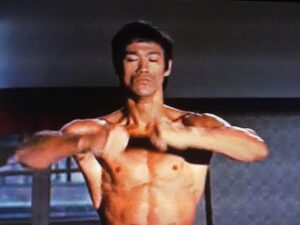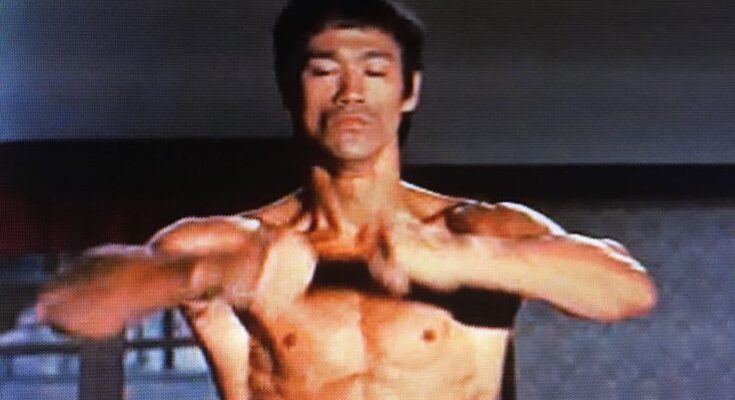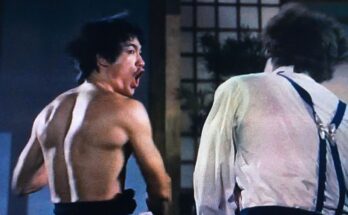Bruce Lee’s physique, particularly his pronounced latissimus dorsi muscles—often referred to as “cobra lats”—was not merely for aesthetics. These muscles played a pivotal role in his martial arts prowess, contributing to his explosive power and agility.

The Functionality of Lee’s Lats
Lee’s lats were integral to his fighting technique. They facilitated powerful punches by aiding in the rapid retraction of the arm, enhancing the speed and force of his strikes. Additionally, strong lats contributed to torso rotation, allowing for more dynamic movements and effective counterattacks.
The Bioneer
Training Regimen for Lat Development
To develop his lats, Bruce Lee incorporated a variety of exercises into his routine:
Chin-Ups: Both standard and behind-the-neck variations to target different parts of the back.
Bent-Over Barbell Rows: To build thickness and strength in the upper back.
One-Arm Dumbbell Rows: For unilateral strength and muscle balance.
Deadlifts: To develop overall back strength and posterior chain.
Punching with Dumbbells: To simulate fight conditions and enhance muscular endurance.
bruceleetraining.com
These exercises were performed with a focus on form, control, and explosive power, aligning with his martial arts objectives.

Philosophy Behind the Training
Lee’s approach was holistic. He believed in training the body to be functional, not just muscular. His workouts were designed to improve performance in combat situations, emphasizing speed, strength, and flexibility. This philosophy extended to his diet and mental training, ensuring that every aspect of his being was honed for martial excellence.
For a visual insight into Bruce Lee’s training methods and the development of his lats, you can watch the following video:
<iframe width=”1415″ height=”796″ src=”https://www.youtube.com/embed/V1IuDx_iST4″ title=”Bruce Lee's Lats Muscles. What is the secret of training?” frameborder=”0″ allow=”accelerometer; autoplay; clipboard-write; encrypted-media; gyroscope; picture-in-picture; web-share” referrerpolicy=”strict-origin-when-cross-origin” allowfullscreen></iframe>



